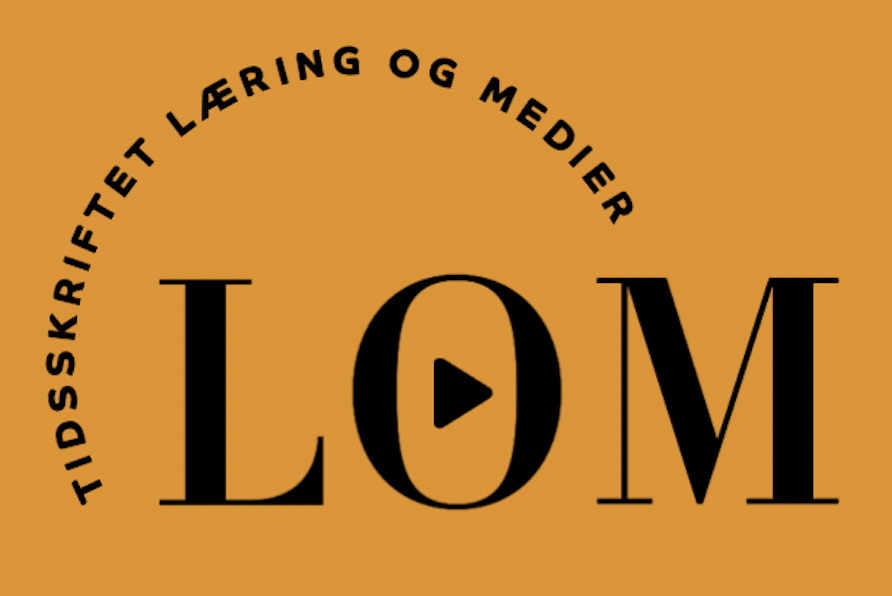Læring med videoteknologi – peer feedback og videosupervision
DOI:
https://doi.org/10.7146/lom.v9i16.24373Keywords:
videooptagelser, peer feedback, supervisionAbstract
Denne artikel beskriver, hvordan underviserne arbejder med gradvist at indføre de beskrevne scenarier for at sikre løbende succes. Metoder og undervisningspraksis er løbende blevet justeret for at optimere de studerendes læring. Forventeligt bliver designet afprøvet i formative prøver i takt med indførelsen af den nye eksamenslovgivning.
Undervisningen i praktisk færdighedstræning har gennem tiden været præget af mesterlæreprincippet. Undervisningsscenarierne, som vi indfører nu, bygger på nutidig pædagogik, hvor videosupervision og peer feedback vægtes højt sammen med Activity, Individuality og Relevance (jf FAIR-principperne) (Harden & Laidlaw 2013; Hattie og Timberley 2007). Inkludering af IT og videoudstyr kan hjælpe studerende både i øvelser med online peer-feedback og i den asynkrone videosupervision med underviser. At den studerende kan kigge med på sin egen udførelse i supervisionsdelen er en af de største gevinster i det nye didaktiske design. Endvidere er vores indsatser med peer-feedback blevet videreudviklet med rubrics, som specifikt er målrettet på at give feedback på den praktiske udøvelse af færdighederne. Dokumentationsmaterialet rummer bl.a. de studerendes selvvurderede læringsudbytte målt ved hhv. at give og modtage feedback.
Downloads
References
Amanda Asghar (2010). Reciprocal peer coaching and its use as a formative assessment strategy for first‐year students, Assessment & Evaluation in Higher Education, 35:4, 403-417, DOI: 10.1080/02602930902862834
Bandura, A. (1977). Self-efficacy: Toward a Unifying Theory of Behavioral Change. Psychological Review, 84 (2), pp.191-215.
Boud, David (2000). Sustainable Assessment: Rethinking assessment for the learning society, Studies in Continuing Education, 22:2, 151-167, DOI: 10.1080/713695728
Chatfield M & Mander A. (2009). The Skillings-Mack test (Friedman test when there are missing data). Stata J. 2009;9(2):299-305
Cuzick J. (1985). A Wilcoxon-type test for trend. Stat Med. 1985;4(1):87-90
Dankelmann J, Chamarra M.K., Verdaasdonk E.G.G., Stassen L.P.S. & Grimbergen C.A. (2005). Fundamental aspects of learning minimally invasive surgial Skills. Minimally invasive therapy, 2005; 14:4-5, 247 – 256
Dweck, C. (2006). Mindset How You Can Fulfil Your Potential. London: Constable and Robinson Ltd.
Hinck, G & Bergmann T.F. (2013), Video capture on student-owned mobile devices to facilitate psychomotor skills acquisition: A feasibility study J Chiropr Educ 2013;27(2):158–162
Goldin, Ilya M (2011) A focus on content: the use of rubrics in peer review to guide students and instructors. Submitted to the Graduate Faculty of Arts & Sciences in partial fulfillment of the requirements for the degree of Doctor of Philosophy University of Pittsburgh, 2011
Hafner & Hafner (2003), Quantitative analysis of the rubric as an assessment tool: an empirical study of student peer-group rating. International Journal of Science education Vol 25 nr. 12 pp 1509 -1528
Harden Ronald M. & J. M. Laidlaw (2013) Be FAIR to students: Four principles that lead to more effective learning Medical Teacher 2013; 35, no1: 27–31
Hattie J. and Timperley H. (2007). The Power of Feedback Review of Educational Research March 2007, Vol. 77, No. 1, pp. 81-112 DOI: 10.3102/003465430298487
Nicol D. (2007) Principles of good assessment and feedback: Theory and practice, Keynote paper.
Novak, J.D. (2013). Empowering Learners and Educators. Journal for Educators,
Teachers and Trainers, Vol. 4 (1), pp. 14 – 24.
Nørgård C, Lauridsen, H H & Beck S. (2014) Når design af færdighedstræning er udgangspunkt for design af et færdighedslaboratorium i klinisk biomekanik, Læring & Medier (LOM) nr. 12
Reddy, Malini Y. & Andrade H, (2010) A review of rubric use in higher education. Assessment & Evaluation in Higher Education, Vol. 35, No. 4, July 2010, 435–448, DOI: 10.1080/02602930902862859
Sadler, Royce D. (1998) Formative Assessment: revisiting the territory, Assessment in Education: Principles, Policy & Practice, 5:1, 77-84, DOI: 10.1080/0969595980050104
Schön Donald S., (2013) Uddannelse af den reflekterende praktiker, KLIM
Turner, Scott Alexander (2009). Peer Review in CS2: the Effects on Attitudes, Engagement, and Conceptual Learning. Dissertation submitted to the faculty of the Virginia Polytechnic Institute and State University in partial fulfillment of the requirements for the degree of Doctor of Philosophy In Computer Science and Applications
Downloads
Published
How to Cite
Issue
Section
License

Articles published in the Journal of Learning and Media are licensed under a Creative Commons Attribution-NonCommercial-NoDerivatives 3.0 Unported Licens.
Authors retain copyright and grant the journal right of first publication; simultaneously articles are licensend under the Creative Commons Attribution license: Attribution-NonCommercial-NoDerviatives (by-nc-nd). Read about this license at https://creativecommons.org/licenses/by-nc-nd/3.0/
---
At LOM.dk, you will also find articles from the discontinued Journal for the Continuing and Further Education of the Danish Universities (UNEV). Note that special rules apply to UNEV articles:
It is the authors and any other copyright holder who have the copyright of articles published under the auspices of UNEV, and access to the articles is contingent on users acknowledging and complying with the associated legal guidelines:
- Users may download and print one copy of any UNEV publication for private studies or research.
- The redistribution of articles or the use of these for revenue-funded activities or commercial purposes are not allowed.
- It is not allowed to distribute the URLs of UNEV articles.

